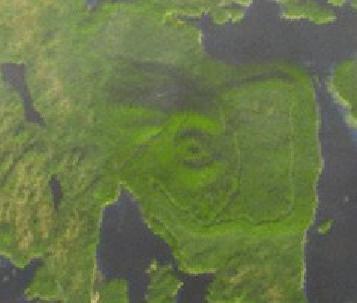Kitasu Hill facts for kids
Quick facts for kids Kitasu Hill |
|
|---|---|

Satellite image of Kitasu Hill (center)
|
|
| Highest point | |
| Elevation | 235 m (771 ft) |
| Prominence | 230 m (750 ft) |
| Geography | |
| Location | British Columbia, Canada |
| Parent range | Kitimat Ranges |
| Geology | |
| Age of rock | Holocene |
| Mountain type | Monogenetic cinder cone |
| Last eruption | Holocene |
Kitasu Hill is a young volcano located on Swindle Island in British Columbia, Canada. It is a type of volcano known as a cinder cone. This hill is about 235 meters (771 feet) tall. You can find it about 17 kilometers (11 miles) southwest of a community called Klemtu. Kitasu Hill is also south of Kitasu Bay.
This volcano once produced lava flows that spread out to the north. Kitasu Hill is the most important volcano in a group called the Milbanke Sound Group.
What is a Cinder Cone?
A cinder cone is the simplest type of volcano. It usually looks like a cone-shaped hill with a bowl-shaped hole, or crater, at its top. Cinder cones are built from small pieces of lava. These pieces are shot into the air from a single opening, called a vent.
When the lava pieces cool quickly, they fall back down around the vent. They pile up to form the cone shape we see. Think of it like a pile of ash and small rocks.
Kitasu Hill's Features
Kitasu Hill is made of a common volcanic rock called basalt. This volcano is considered "young" because it formed during the Holocene epoch. The Holocene is the current geological time period we live in. This means Kitasu Hill erupted relatively recently in Earth's history.
Location and Importance
Kitasu Hill is part of the Kitimat Ranges mountain range. It is located on the coast of British Columbia. Its position makes it a notable landmark in the Milbanke Sound Group. This area is known for its beautiful coastal scenery and unique geological features.

